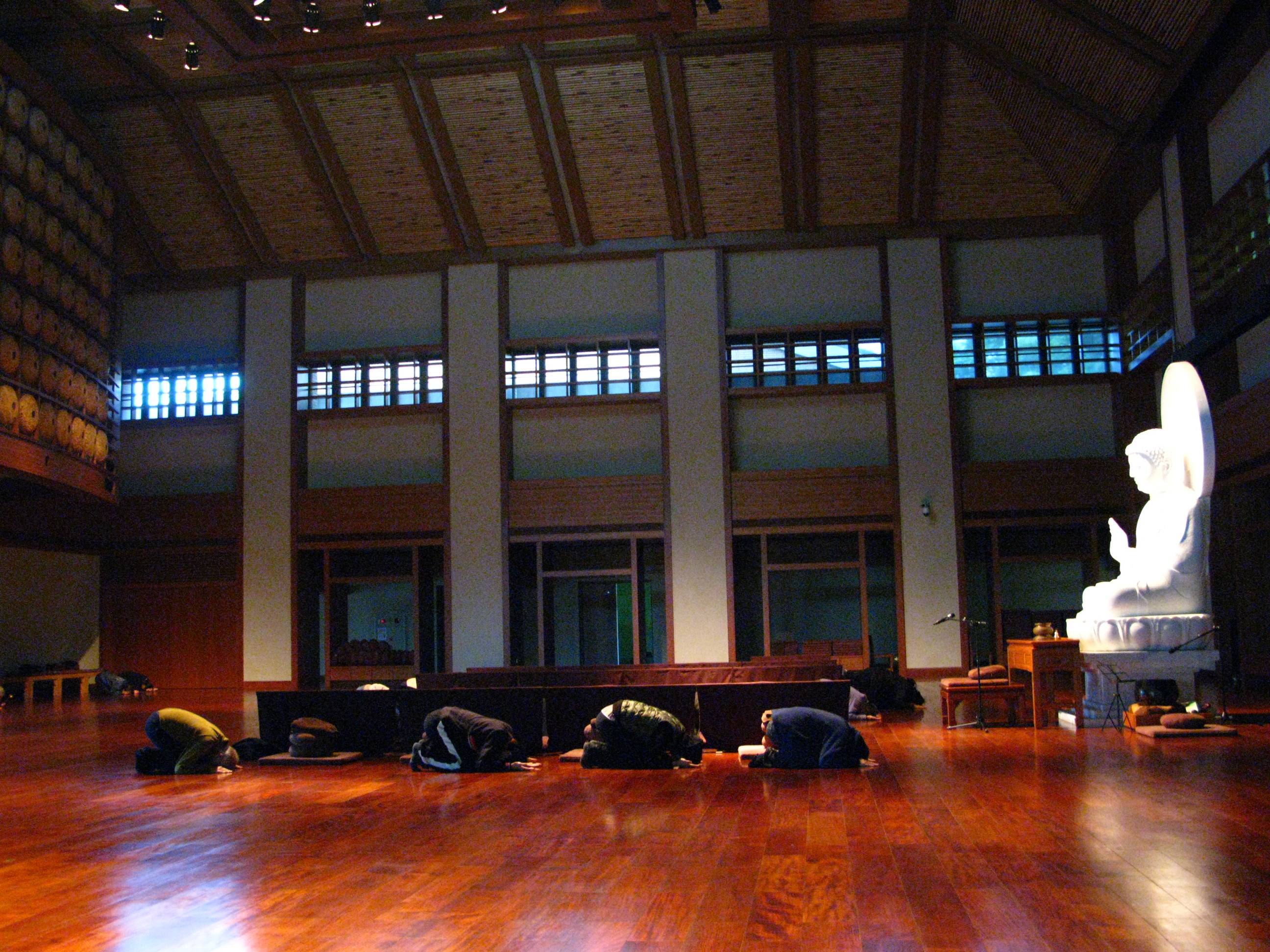News

January 07, 2020
Buddhism Topics:Is the view of practice more important than practice itself?
SHIH-FU:
The saying is a paraphrase of a line which reads: "What one knows or sees is more important than where one is stepping." The phrase, "What one knows or sees, " should not be replaced with the word "view, " because view is something that can come from one's learning. The phrase refers to those things that come directly from one's experience. In the Lotus Sutra there is a saying, "To open what the Buddha knows and sees; to reveal what the Buddha knows and sees; to realize what the Buddha knows and sees; to enter what the Buddha knows and sees." What the Buddha knows and sees is emptiness, no form, no attachment, no phenomena.
The saying is a paraphrase of a line which reads: "What one knows or sees is more important than where one is stepping." The phrase, "What one knows or sees, " should not be replaced with the word "view, " because view is something that can come from one's learning. The phrase refers to those things that come directly from one's experience. In the Lotus Sutra there is a saying, "To open what the Buddha knows and sees; to reveal what the Buddha knows and sees; to realize what the Buddha knows and sees; to enter what the Buddha knows and sees." What the Buddha knows and sees is emptiness, no form, no attachment, no phenomena.

The line should be interpreted thusly: "What is known and seen is more important than what one is doing." And "what is known and seen" specifically refers to what the Buddha knows and sees. How should a practitioner relate to this? First is the case of one who has experienced enlightenment and has entered into what Buddha knows and sees. How does one really know that what one sees is actually what the Buddha sees? One must gauge the experience against the teachings of the Buddha ─ the sutras. Practicing diligently, studying the sutras and keeping the precepts fall under the heading of "What one does." In this case, what one does is not as important as what one sees or knows. If the experience is not real enlightenment, then one cannot know and see what the Buddha knows and sees.
If one has a good, qualified teacher, it is not absolutely necessary to read the sutras for proper guidance. Such a teacher should be able to determine if the experience is real or not, shallow or deep. If it isn't enlightenment, then the teacher can point directly to the problem or sticking point ─ the obstruction or the attachment.
The aphorism is not advising people to abandon practice; rather, it is saying that practice is important, but that which the Buddha knows and sees is even more important. Without the guidance of the Buddha's experience, people would not be practicing Buddhadharma correctly. They would be practicing outer path teachings. So, before enlightenment, practitioners need the guidance of what the Buddha knows and sees. After enlightenment, they still need to check their experience against the teachings of the Buddha and see if their experience is truly what the Buddha knows and sees.
The aphorism is not advising people to abandon practice; rather, it is saying that practice is important, but that which the Buddha knows and sees is even more important. Without the guidance of the Buddha's experience, people would not be practicing Buddhadharma correctly. They would be practicing outer path teachings. So, before enlightenment, practitioners need the guidance of what the Buddha knows and sees. After enlightenment, they still need to check their experience against the teachings of the Buddha and see if their experience is truly what the Buddha knows and sees.
If you have intellectually grasped what the Buddha knows and sees, even without enlightenment, you will not likely venture down the wrong path. You can even guide others in practice, but you won't be able to confirm someone's possible enlightenment. At least you can help people in the correct way of practice. On the other hand, if a teacher isn't enlightened and does not conceptually understand what the Buddha knows and sees, he or she is probably practicing outer paths and leading others down the wrong path. People often practice with some attachment or expectation in mind ─ an idea that there is something to be gained. This can lead to problems.
From this perspective, I say that without the guidance of what the Buddha knows and sees, practitioners of other religions cannot experience the Buddha's enlightenment, no matter how deep their experience. Such persons will still have an idea of, or an attachment to, an unchanging, eternal totality ─ an omnipresence. What it is called does not matter. When one experiences an unchanging totality or eternity, it is not what the Buddha knows and sees.
To attain this level of practice ─ to experience totality ─ is extremely difficult and a sign of progress. Many practitioners, including Buddhists, have shallow experiences of this nature. They feel a lightness or peace; they might believe that they are free from self-centeredness, but they still have attachments. This is why one needs the guidance of a good teacher.
Many practitioners misinterpret this kind of experience, which could, indeed, correspond to fairly elementary levels of attainment. For example, there are four fruition levels in the Hinayana tradition, but prior to this there are four preliminary levels: level of warmth, top level, level of wisdom, level of first in the world. Only after these four levels can someone enter the fruition levels, of which the fourth is the true arhat position. Many practitioners, Ch'an included, think they are already enlightened when in fact they have only experienced the first level of warmth.
Resources
Zen Wisdom, Is the view of practice more important than practice itself?, p.45
